This post contains affiliate links. We earn commissions if you purchase products from retailers after clicking on a link from our site. As an Amazon Associate, we earn from qualifying purchases.
You may have seen the “/” in a guitar tab, and you may have even heard that it is a slide–but what does that mean?
The “/” in a guitar or ukulele tab signifies the player to transition between notes continuously without releasing pressure off of the guitar/ukulele string, creating a smooth glissando effect.
That sounds cool, but what does it look like and sound like? Let’s take a look.
Furthermore, these slashes (“/”) in guitar music can mean many different things! I’ll seek to clear up all of this so you’ll know what they all mean.
The Explanation Of The / Symbol in Guitar Tabs
Perhaps you’re playing a Jack Johnson tab and you see a / symbol. At first you might think somebody fell asleep at the keyboard, but it turns out this symbol is describing an incredibly essential skill for guitar playing. “The Slide”.
In music terms, this is called a glissando, where you transition from one note to another without a break. If you see a glissando in a guitar tab, you should be proud, and you should rub it in your piano playing friends’ faces, because piano can’t make glissandos!
I’m going to show an example tab, and then I’m going to give a step by step picture explanation of what’s going on so you can see what to do. I’ll also throw in a sound bite so you can know exactly what this technique is for.
So, let’s talk about a transition from the 5th fret on the lowest note (A) to the note two frets up (B), the tab that you might see could look like this:
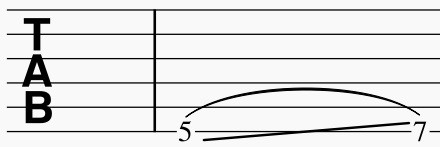
By the way, looking for recording equipment and musical instruments? Check out Sweetwater.com for microphones, monitors, audio interface or any other recording gear that you could ever need. (Affiliate Link)
By the way, looking for a guitar? Check out GuitarCenter.com for acoustic, electric, or classical guitars as well as all the guitar gear you could ever need. (Affiliate Link)
Or, if you’re on Ultimate Guitar Tabs, you’ll likely see something like this:

In the next section I’ll show you how to do this:
How To Do a Slide on the Guitar (Glissando)
I’m going to be doing the glissando that is shown in the example tabs in the previous section.
- Place your middle finger on the 5th fret of the bottom string of the guitar (A)
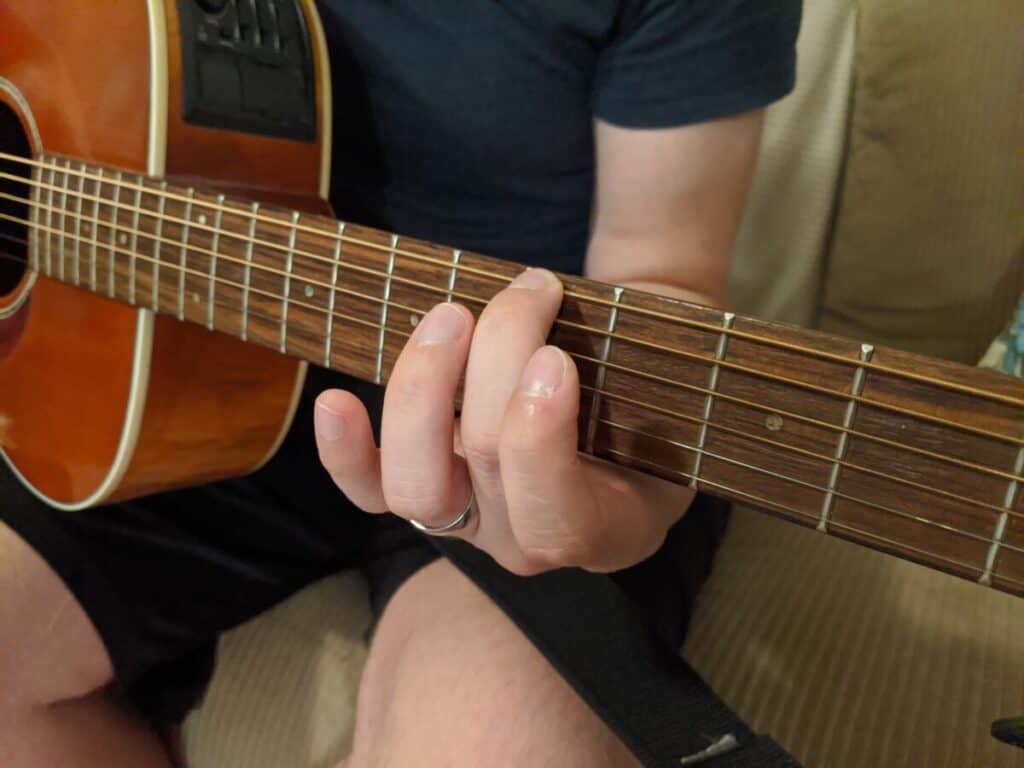
2. Pluck the note with the string pushed down on the 5th fret
3. While still pressing down the string, move your middle finger to the 7th fret
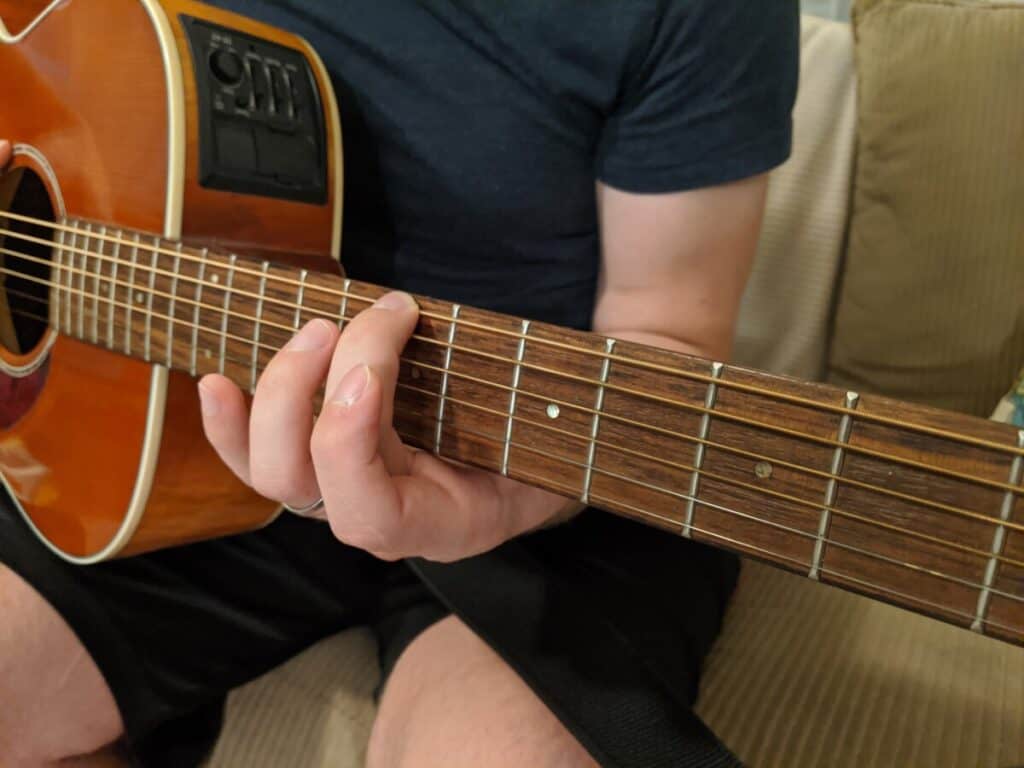
You have successfully done a glissando!
Here’s an animated gif just to make sure it’s all sunk in:
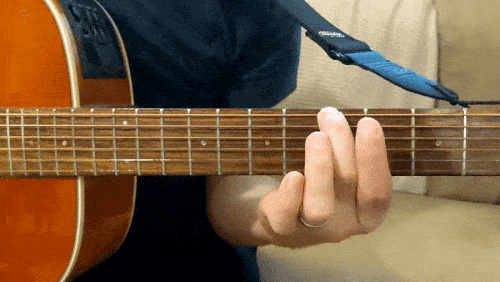
Finally, if you’d like to hear what this sounds like, you can hear it here:
What About the “\” Symbol?
As you might have guessed by now, this is also a glissando, but in the opposite direction. This is an example tab of what that would look like:
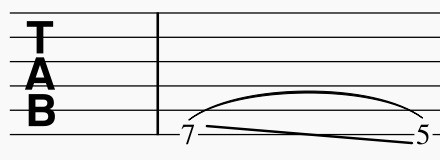
The exact same process applies, you just apply pressure as you move your finger down the fretboard while the string is plucked so you get a nice smooth sound.
What About Slash Chords?
It is kind of confusing because in a guitar tab there are only a limited number of symbols available, and the same symbol “/” is used multiple times. Perhaps you came here to learn about slash chords, which uses the “/” symbol, but for a purpose that is completely different.
A slash chord is notated like this: “C/G”.
The note on the left is the primary chord being played, and the note on the right of the slash is the bass note.
What does that mean? Well, for example, if you were to play C/G, you would play the normal C shape, and then adjust your ring and pinky finger to play the note right above the top note of the normal chord (which is G). The G is being used as a bass note to support the C chord.
Here’s a tab of that chord to be ultra clear:
Stave 1:
E|———–
B|—–1—-
G|———–
D|—–2—-
A|—–3—-
E|—–3—-
This makes a rich sounding C chord that has extra emphasis on the 5th note of the C major scale. Cool right?
What About Slash Notation for Measures?
There is one more slash that I’ll talk about here. You may already know about slash chords and slides, but what about slash notation?
Here’s an example of what I’m talking about there:

This symbol means simply that there is no specific rhythm intended for the player, only that whatever notes they play, they can safely use the notes in the chords listed above the staff and it will fit with the rest of the music.
This is often used for rhythm sections (like guitar or piano) where the composer doesn’t really care about what rhythms the rhythms section creates together as long as they are working well, together and keep the tempo, properly.
Lastly, this kind of notation is used for a soloist where the notes and rhythm are not dictated by the music but instead is left to the player to improvise!
This type of playing takes a lot of practice but is super fun. So, next time you see these slashes, you won’t have to panic.
